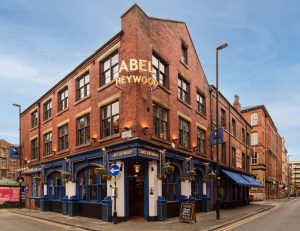Crowded out: the most packed rail routes revealed

THE region features prominently in a list of the Department of Transport’s most crowded trains.
Top of the list is the 04:22 TransPennine Express service from Glasgow Central to Manchester Airport.
The time when the most overcrowding was noticed was clearly closer to the 08:47 arrival time in Manchester, when commuters joined the route. At its peak, 355 people were counted on a train designed for 191.
The DfT warns that there are problems with the reliability of the figures, in particular that standard class passengers were counted on a single day that is not necessarily representative. Also, the passengers are counted by somebody on the train, which means human error is possible, especially on particularly crowded trains.
The second train on the list was also a TransPennine Express service, this one the 16:00 going from Manchester Airport to Edinburgh.
The DfT says that the TransPennine services in the top 10 were all rerouted via Wigan rather than Bolton, which extended the length of the most crowded part of the journey.
The DfT statistics make allowances for standing of about 35% of the number of seats on services taking less than 20 minutes, so these services would not previously have been included.
In third place comes the 06:31 First Great Western Service from Reading to London Paddington.
Separately the DfT said that peak-time crowding was greater in London than in other cities. It says that in the weekday morning peak, about 563,000 passengers were arriving at stations in central London, of whom 139,000 were standing.
The second busiest city was Birmingham, with 39,000 commuters coming into the city in the morning peak.
Manchester came third with 31,000 morning commuters.
“I know how frustrated customers are with overcrowding, and I expect the rail industry, including operators, to continue to develop innovative proposals to meet the capacity challenge head on,” said rail minister Claire Perry told the BBC.
“We are investing £38bn in the railways for the five years until 2019, underpinned by flagship schemes like the Intercity Express and Thameslink programmes to provide more space and more seats on trains.”
According to the Office of Rail and Road (ORR), the number of rail journeys taken in Britain has risen from 735 million at the time of privatisation in 1994-95 to 1.7 billion in 2014-15.








